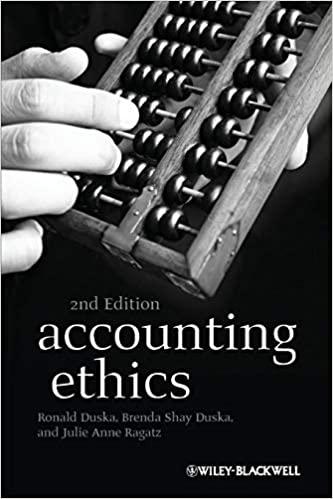Answered step by step
Verified Expert Solution
Question
1 Approved Answer
QUESTION 4 ONLY You have the data on the eligibility of the US workers to have the so-called 401(k) retirement plan and you are interested

QUESTION 4 ONLY
You have the data on the eligibility of the US workers to have the so-called 401(k) retirement plan and you are interested to find out what factors affect the probability of them being qualified for this plan. The main variables you use are: e401k equals to 1 if a person is eligible for the 401(k) retirement plan, and 0 otherwise; age is age of a worker in years, age2 is age-squared; inc is annual income in thousands of USD; inc2 is income-squared; male is equal to 1 if a worker is male, and 0 if female; pira is equal to 1 if a worker has private individual retirement account (not connected to 401(k)). 1. First you run the OLS model below. Interpret its results. Would you say that 401(k) eligibility is independent of income and age? What about gender? Explain. (5 points) 2. Is this model appropriate in this context? Why? (5 points) 3. Why do you think you should include age-squared and income-squared in the model? What does it help you understand about the probability of being eligible to 401(k)? (5 points) Model 3: OLS, using observations 1-9275 Dependent variable: e401k Heteroskedasticity-robust standard errors, variant HC1 coefficient std. error t-ratio p-value const -0.586289 6.8785541 -6.445 1.Zle-10 *** inc 0.0124464 0.989600301 28.73 2.22e-93 *** inc2 -6.16489e-85 5.09415-06 -12.32 1.33e-34 *** age 0.6265961 6.08382346 6.932 4.41e-12 *** agez -0.680305270 4.37531e-05 -6.977 3.22e-12 *** male -0.89353282 0.0129525 -0.2931 0.7694 Mean dependent var 0.392129 S.D. dependent var @.488252 Sum squared resid 2002.395 S.E. of regression 0.464792 R-squared 8.094277 Adjusted R-squared 0.093789 F{5, 9269 289.3228 P-value (F) 3.6e-212 Log-Likelihood -6851.465 Akaike criterion 12114.93 Schwarz criterion 12157.74 Hannan-Quinn Excluding the constant, p-value was highest for variable 4 (male) , p( 12129.48 4. Next you have run the model below. Compare its results to the ones above. Which model is preferred in this context? (5 points) Model 4: Logit, using observations 1-9275 Dependent variable: e401k OML standard errors coefficient std. error z slope const inc inc2 age age2 male -4.64502 0.0563231 -0.000285683 0.125495 -0.00144588 -0.0162523 0.388015 8.00299568 2.46126e-05 0.0185443 0.000212538 0.956748 -11.97 18.80 -11.61 6.767 -6.893 -8.2864 0.0132954 -6.74372e-05 @.6296239 -0.000341309 -0.00383295 Mean dependent var 0.392129 S.D. dependent var 0.488252 McFadden R-squared 0.072319 Adjusted R-squared 0.071353 Log-likelihood -5762.185 Akaike criterion 11536.37 Schwarz criterion 11579.18 Hannan-Quinn 11550.91 Number of cases 'correctly predicted' = 6024 (64.9%) f(beta'x) at mean of independent vars = 0.236 Likelihood ratio test: Chi-square[5) = 898.4 (0.0086] Predicted 1 Actual o 4592 1946 1 2205 1432 Excluding the constant, p-value was highest for variable 4 (male)
Step by Step Solution
There are 3 Steps involved in it
Step: 1

Get Instant Access to Expert-Tailored Solutions
See step-by-step solutions with expert insights and AI powered tools for academic success
Step: 2

Step: 3

Ace Your Homework with AI
Get the answers you need in no time with our AI-driven, step-by-step assistance
Get Started


